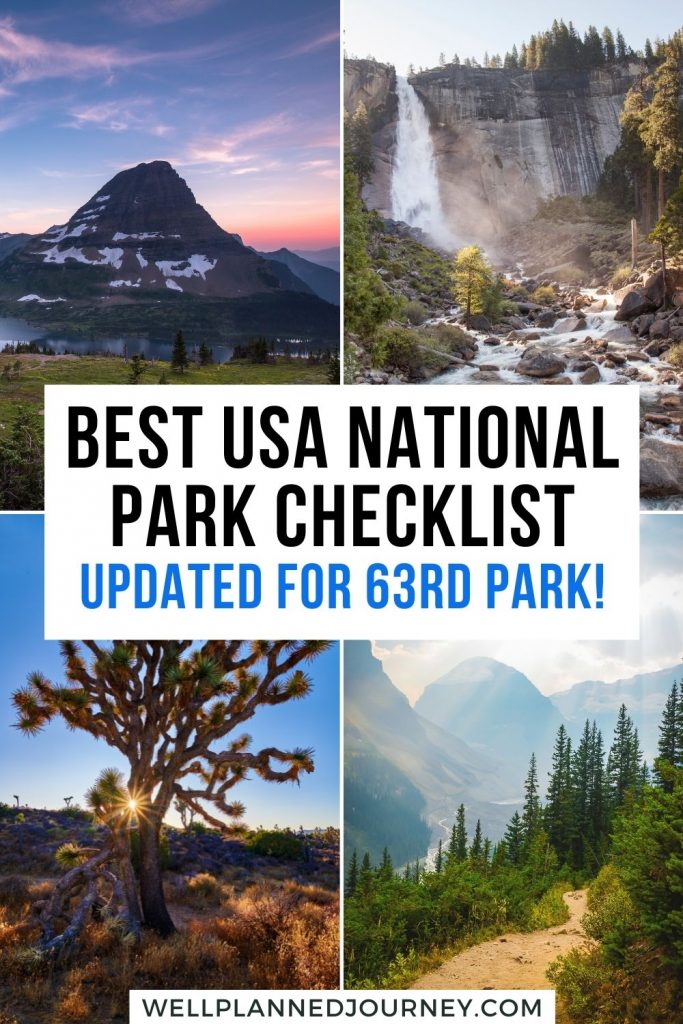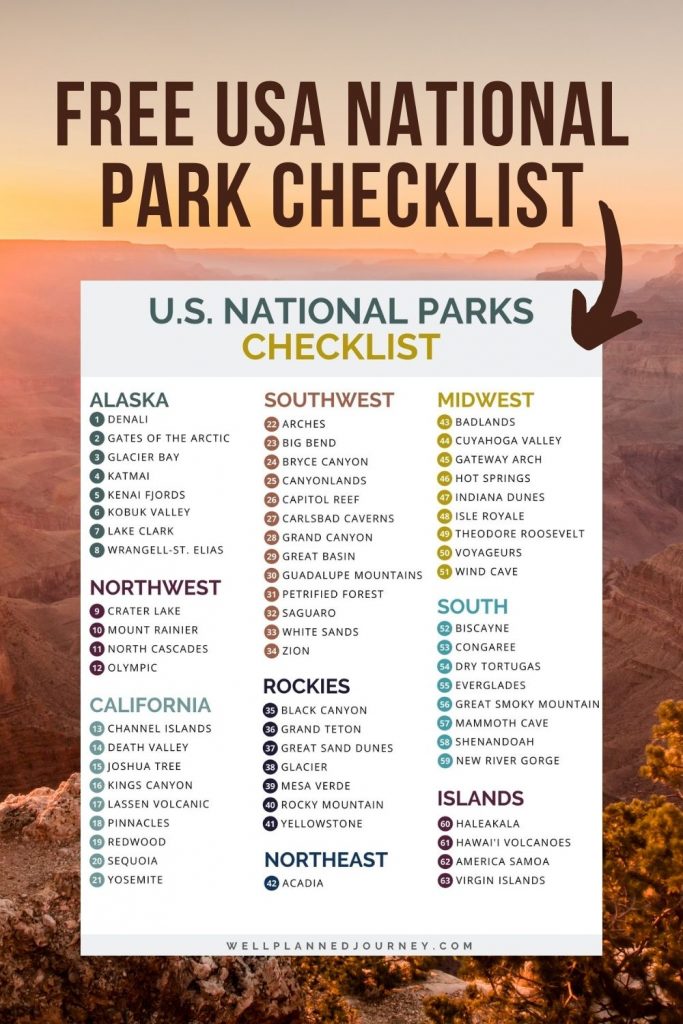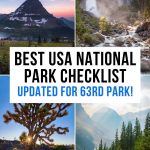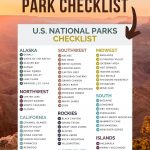The United States has one of the world’s most diverse and photogenic landscapes. You’ll find everything from skyscraping mountain ranges to arid deserts. And there’s no better place to see America’s beauty than in its national parks!
National parks have something for everyone: hiking, camping, backpacking, kayaking, and more! Visiting US national parks should be on your bucket list. I’ve put together this national park checklist that covers all 63 US national parks!
How many national parks are there?
The National Park Service protects 423 national park sites in the United States and territories. However, as of 2024, only 63 sites have earned the title “National Park”. When people mention national parks, they typically refer to these 63 national parks.
The parks protect more than 130,000 square miles in the United States. Each state has at least one park, or “unit”, plus parks in Washington D.C., American Samoa, Puerto Rico, and the Virgin Islands!
What are the 63 national parks?
| Park Name | State | Year Established | Annual Visitors |
|---|---|---|---|
| Acadia | Maine | 1919 | 4,069,098 |
| American Samoa | American Samoa | 1988 | 8,495 |
| Arches | Utah | 1929 | 1,806,865 |
| Badlands | South Dakota | 1978 | 1,224,226 |
| Big Bend | Texas | 1944 | 581,220 |
| Biscayne | Florida | 1980 | 705,655 |
| Black Canyon of the Gunnison | Colorado | 1999 | 308,910 |
| Bryce Canyon | Utah | 1928 | 2,104,600 |
| Canyonlands | Utah | 1964 | 911,594 |
| Capitol Reef | Utah | 1971 | 1,405,353 |
| Carlsbad Caverns | New Mexico | 1930 | 349,244 |
| Channel Islands | California | 1980 | 319,252 |
| Congaree | South Carolina | 2003 | 215,181 |
| Crater Lake | Oregon | 1902 | 647,751 |
| Cuyahoga Valley | Ohio | 1974 | 2,575,275 |
| Death Valley | California | 1994 | 1,146,551 |
| Denali | Alaska | 1917 | 229,521 |
| Dry Tortugas | Florida | 1935 | 83,817 |
| Everglades | Florida | 1947 | 942,130 |
| Gates of the Arctic | Alaska | 1980 | 7,362 |
| Gateway Arch | Missouri | 2018 | 1,145,081 |
| Glacier | Montana | 1910 | 3,081,656 |
| Glacier Bay | Alaska | 1980 | 89,768 |
| Grand Canyon | Arizona | 1919 | 4,532,677 |
| Grand Teton | Wyoming | 1929 | 3,885,230 |
| Great Basin | Nevada | 1986 | 215,181 |
| Great Sand Dunes | Colorado | 1932 | 602,613 |
| Great Smoky Mountains | Tennessee | 1934 | 14,161,548 |
| Guadalupe Mountains | Texas | 1972 | 243,291 |
| Haleakala | Hawaii | 1961 | 853,181 |
| Hawai’i Volcanoes | Hawaii | 1916 | 1,262,747 |
| Hot Springs | Arkansas | 1921 | 2,162,884 |
| Indiana Dunes | Indiana | 2019 | 3,177,210 |
| Isle Royale | Michigan | 1940 | 25,844 |
| Joshua Tree | California | 1994 | 3,064,400 |
| Katmai | Alaska | 1918 | 24,764 |
| Kenai Fjords | Alaska | 1980 | 411,782 |
| Kings Canyon | California | 1940 | 562,918 |
| Kobuk Valley | Alaska | 1980 | 11,540 |
| Lake Clark | Alaska | 1980 | 18,278 |
| Lassen Volcanic | California | 1916 | 359,635 |
| Mammoth Cave | Kentucky | 1941 | 515,774 |
| Mesa Verde | Colorado | 1906 | 548,477 |
| Mount Rainier | Washington | 1899 | 1,670,063 |
| New River Gorge | West Virginia | 2020 | 1,682,720 |
| North Cascades | Washington | 1968 | 17,855 |
| Olympic | Washington | 1938 | 2,718,925 |
| Petrified Forest | Arizona | 1962 | 590,334 |
| Pinnacles | California | 2013 | 348,857 |
| Redwood | California | 1968 | 435,879 |
| Rocky Mountain | Colorado | 1915 | 4,434,848 |
| Saguaro | Arizona | 1994 | 1,079,786 |
| Sequoia | California | 1890 | 1,059,548 |
| Shenandoah | Virginia | 1935 | 1,592,312 |
| Theodore Roosevelt | North Dakota | 1978 | 796,085 |
| Virgin Islands | US Virgin Islands | 1956 | 323,999 |
| Voyageurs | Minnesota | 1975 | 243,042 |
| White Sands | New Mexico | 2019 | 782,469 |
| Wind Cave | South Dakota | 1903 | 709,001 |
| Wrangell-St. Elias | Alaska | 1980 | 50,189 |
| Yellowstone | Wyoming | 1872 | 4,860,242 |
| Yosemite | California | 1890 | 3,287,595 |
| Zion | Utah | 1919 | 5,039,835 |
Are you trying to check every national park off your bucket list? Don’t miss this free, printable national park checklist! It covers all 63 US national parks, including the latest addition, New River Gorge! Plus, you’ll get a free national park map to help you plan your next trip.
Download your free national park checklist here.
List of All 63 National Parks by State
This list of national parks by state is organized in Alphabetical order, first by state, then by park name.
Alaska National Parks:
- Denali: Mount Denali (formerly known as Mount McKinley) is the tallest mountain in North America. The elevation gain from base to peak is taller than Mount Everest! This is the most visited of the Alaska national parks. The best way to explore the park is on a ranger-led shuttle with a few stops to explore the park’s hikes.
- Gates of the Arctic: This is the second biggest national park and lies entirely within the Arctic Circle. This incredibly remote national park is best seen by plane – the park has no roads!
- Glacier Bay: Just north of Juneau, Alaska, this park is roughly 25% ice. The park is known for its 50 impressive glaciers, including tidewater glaciers that end in the sea! The best way to explore the waters and glaciers of Glacier Bay National Park is by boat tour or sea kayaking.
- Katmai: Katmai National Park is the best place in the United States to spot brown bears and sockeye salmon! The highlight of this national park is the bears feeding on migrating salmon at Brooks Falls in the summer.
- Kenai Fjords: The smallest of the Alaskan parks (but still bigger than many in the contiguous US!), the famous Harding Icefield is the focal point of this national park. One of the best ways to see the park’s wildlife and tidewater glaciers is on a boat tour.
- Kobuk Valley: Like several of the other Alaskan national parks, Kobuk Valley can’t be reached by car. This remote park is only accessible by foot, plane, or boat. Don’t miss the unique Kobuk Sand Dunes, the largest Arctic dune field in North America.
- Lake Clark: One of the most challenging national parks to reach, visitors can only reach Lake Clark by plane! This national park is often called a sampler of Alaska with forests, mountains, crystal clear lakes, and plenty of wildlife.
- Wrangell-St. Elias: This is America’s largest national park covering over 13 million acres. The best way to see this massive park is from above. On a flightseeing tour, you can capture the size of the gigantic mountains that cover the park.
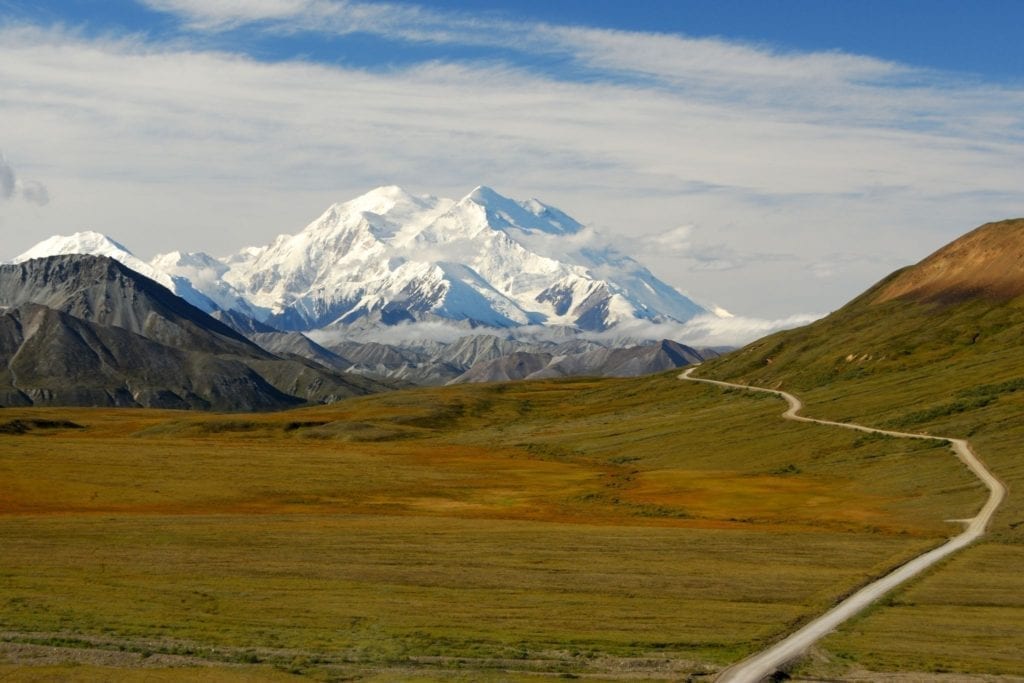
American Samoa National Parks
- National Park of American Samoa: This is the furthest and least developed US national park. The remoteness allows you to immerse yourself in the traditional Samoan culture fully. The national park is split across three islands, with a local flight required to travel between them.
Arizona National Parks
- Grand Canyon: One of the most popular natural landmarks in the country and the second most famous national park, the Colorado River carved the canyon over millions of years. Today, the park is split into the North Rim and South Rim. The South Rim is where most visitors spend their time. It’s easiest to access and is home to the famous national park lodges along the canyon edge.
- Petrified Forest: Home to fossils, ruins, and petrified trees, this park is a history buff’s dream come true with fossil exhibits at Rainbow Forest Museum and petroglyphs at Puerco Pueblo. Explore the park’s history with a scenic drive, stopping at vistas and for short hikes.
- Saguaro: When you think of a picturesque desert, you’re likely envisioning the landscape of Saguaro National Park. This park is filled with giant saguaro cactuses and surrounds the major city of Tucson. Visiting the park in the winter allows you to escape the extreme summer heat.
Arkansas National Parks
- Hot Springs: This isn’t your typical national park. It comprises a series of bathhouses in a historic Arkansas town. The best way to experience Hot Springs National Park is to soak in the therapeutic hot springs and stroll along Bathhouse Row.

California National Parks
- Channel Islands: The Channel Islands are a group of small islands off the coast of southern California, less than 25 miles from Santa Barbara. To reach this park, you’ll need to take a ferry and explore on foot or kayak once you arrive! You’ll likely see dolphins, sea lions, and migrating whales.
- Death Valley: Hugging the California-Nevada border, Death Valley is the hottest, driest, and lowest place in the United States. Temperatures in the summer months are regularly 110 to 120 degrees. Most visitors explore Death Valley in the winter when temperatures are milder to explore the park’s sand dunes, salt flats, and wildflowers.
- Joshua Tree: Two deserts converge in the middle of Joshua Tree National Park, providing a truly unique landscape. In the southern part of the park, you’ll find expansive deserts and short cholla cactus. In the northern part of the park, you’ll find the famous Joshua trees and enormous boulders.
- Kings Canyon: Featuring picturesque Sierra landscapes, Kings Canyon is a less crowded alternative to Yosemite National Park, with equally stunning views. The best way to explore the beauty of Kings Canyon is on a scenic drive or a multi-day backpacking adventure.
- Lassen Volcanic: Home to an active volcano, Lassen is filled with geothermal hot springs and stunning scenery. Don’t miss hikes to alpine lakes and exploring parts of the Pacific Crest Trail.
- Pinnacles: One of the newer national parks, Pinnacles National Park was established around a decade ago. Tucked inland from California’s famous Big Sur region, Pinnacles gets significantly fewer visitors a year. The park is split into two sections, only connected by hiking trails.
- Redwood: This park takes you back millennia with towering redwood trees and ancient ferns. Redwood National Park is home to the world’s tallest tree, Hyperion. However, to protect the tree, it’s exact location is kept a secret.
- Sequoia: Just south of its sister park, Kings Canyon, Sequoia National Park is famous for its sequoia redwood forests, home to the world’s largest tree (not to be confused with the tallest tree in Redwood). It’s also home to the tallest point in the contiguous United States, Mount Whitney.
- Yosemite: Yosemite National Park is the most popular of California’s national parks. Tunnel View is considered one of the best views in the United States, with El Capitan and Half Dome towering above the valley floor. Yosemite has something for everyone – scenic drives, hikes of all levels, and multi-day backcountry trips.
Read More: 16 Best National Parks in California
Colorado National Parks
- Black Canyon of the Gunnison: Like the Grand Canyon, the Black Canyon of the Gunnison National Park is split into two sections: the North Rim and the South Rim. Most visitors choose to explore the vantage points and hikes from the park’s scenic drive atop the canyon.
- Great Sand Dunes: Home to the tallest dunes in North America, massive amounts of sand were left behind after an ancient lake receded from the region. The best way to explore the park is on short hikes to the dunes and overlooks. Plus, adventurous travelers can rent sleds and sandboard down the dunes!
- Mesa Verde: One of the most history-rich parks in the national park system, the park’s signature landmark is Cliff Palace, built by the Puebloans over 1,000 ago. The best way to explore Mesa Verde is on ranger-led tours of the ancestral Puebloan homes or a visit to the archaeological museum.
- Rocky Mountain: The fifth most visited naitonal park, Rocky Mountain is home to the impressive snow-covered peaks that share the park’s name. The Continental Divide splits the park into sections along the mountain ridgeline. The best way to see the park’s stunning mountains and vibrant wildlife is on a scenic drive or hike along the 355 miles of trails.
Florida National Parks
- Biscayne: This is one of the more unique national parks – nearly 95% of the park is underwater! The absolute best way to see this park is by boat or swimming! Some popular activities include scuba diving and snorkeling to see the hidden coral reefs and marine wildlife.
- Dry Tortugas: Centered around Fort Jefferson at the southern tip of Florida, Dry Tortugas is the only park that beats out Biscayne for being the most water-filled. 99% of Dry Tortugas National Park is made up of water! Explore the historic walls of Fort Jefferson before diving in to explore the crystal blue waters in this park’s keys.
- Everglades: Filled with swamps and alligators, the best way to see the expansive water-filled park is to get out on the water. Everglades has viewing platforms and overlooks across the park to give you a closer look at the park’s wildlife.
Hawaii National Parks
- Haleakalā: Located on the island of Maui, Haleakalā is a nature lover’s dream. The park is split between two landscapes: tropical rainforests and mount summits. Most of the park is only accessible on foot, so leave the famed Road to Hāna behind and explore the park’s hiking trails and stunning views.
- Hawai’i Volcanoes: This national park is located on the island of Hawai’i, often referred to as ‘The Big Island’. Hawai’i Volcanoes National Park is home to two active volcanoes!Y ou can view active lava flows and vents along the volcanic crater when conditions allow.
Indiana National Parks
- Indiana Dunes: This is one of the newest national parks, only established in 2019. Here you can explore 15 miles of beaches and sand dunes along the shores of Lake Michigan, the perfect day trip escape from the city, only a short distance from Chicago.
Kentucky National Parks
- Mammoth Cave: Home to the most extensive cave system in the entire world, the underground caves remain the same comfortable temperature all year long, making it the perfect park to visit in the offseason. The best way to experience this national park is on a cave tour, often requiring reservations in the summer.
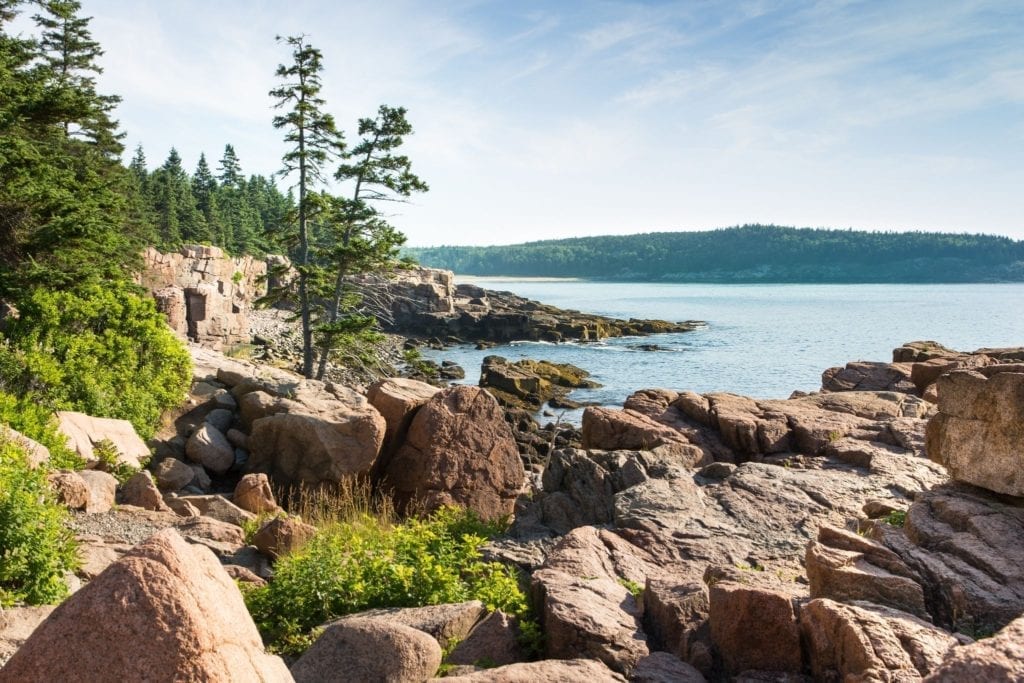
Maine National Parks
- Acadia: This stunning and popular national park is home to the highest point on the east coast, Cadillac Mountain. Fall in Acadia National Park is a must-see. The leaves in the park turn bright orange, providing a new level of beauty versus the park’s summer greenery.
Michigan National Parks
- Isle Royale: Formed by lava millions of years ago, Isle Royale is now an island in Lake Superior, just miles from the United States-Canada border. Isle Royale is only reachable by ferry or seaplane. Explore the island’s coastal campsites or trek Greenstone Ridge on a multi-day backpacking trip.
Minnesota National Parks
- Voyageurs: Located in the land of 1,000 lakes, Voyageurs is a hidden gem best seen by kayak or canoe. Most of the park is only accessible by boat or seaplane! Bring your boat or rent one at the lakeside campgrounds.
Missouri National Parks
- Gateway Arch: Shared between Missouri and Illinois, the park protects the Gateway Arch in St Louis. It is the smallest national park, only a few hundred acres along the Mississippi River. In the park museums, you’ll find exhibits on the United States’ westward expansion and the Dred Scott freedom case.
Read More: 13 Best National Parks in Missouri
Montana National Parks
- Glacier: Often referred to as the “crown of the continent”, it has epic views of the Rocky Mountains, world-class scenic drives, and endless hikes. Once home to over 100 glaciers, there are now only 20 glaciers left in the park. The best way to explore Glacier National Park is on a scenic drive across the park’s famous Going-to-the-Sun Road or on hikes to mountain views.
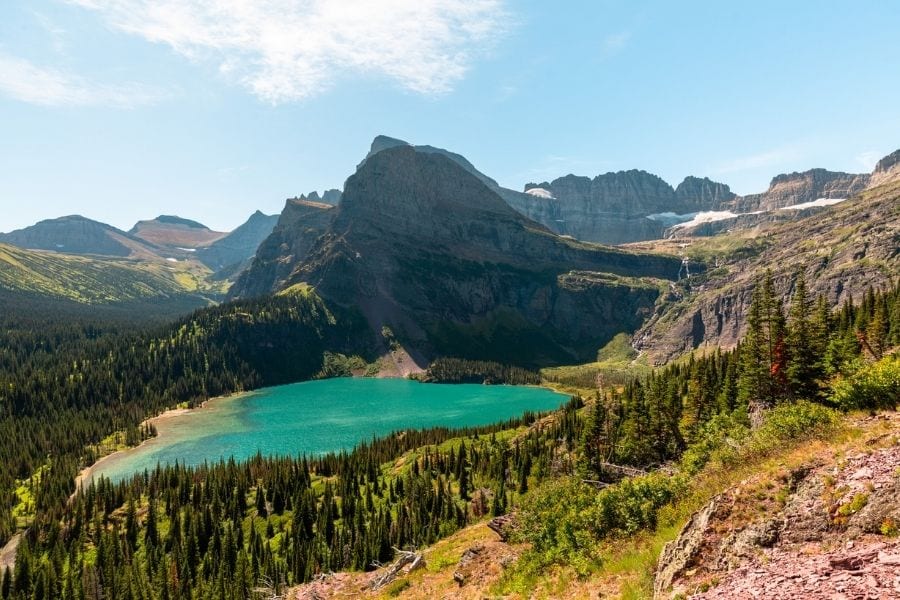
Nevada National Parks
- Great Basin: In this remote part of Nevada, you can explore both above ground and below ground. The park is famous for its Bristlecone pine trees, the oldest living organisms in the world! Below ground, you can explore extensive cave networks on ranger-led tours.
New Mexico National Parks
- Carlsbad Caverns: This park is home to an underground cave network only miles from Guadalupe Mountains National Park. Ancient reefs formed the caverns – the area used to be covered by a sea! The best way to explore the caves is on a guided tour.
- White Sands: White Sands National Park is characterized by giant, rolling white sand dunes, as the name might give away. Here you can explore the dunes by renting sleds and sliding down them.
North Dakota National Parks
- Theodore Roosevelt: Named after the president who protected 230 million acres of United States land, this national park is unique because it’s made up of 3 separate, unconnected areas, or “units”. The most popular activity in the park is driving! Scenic Loop Drive takes you around the park to stunning viewpoints of the South Unit, while a separate Scenic Drive allows you to tour the North Unit.
Ohio National Parks
- Cuyahoga Valley: The lush green landscape and rocky mountains aren’t what you’d expect to find in Ohio. Don’t miss the spring wildflowers and fall foliage in this national park. Unique to this national park, you can explore the beauty on a scenic train ride around the park!
Oregon National Parks
- Crater Lake: The park’s local point was formed after a massive volcanic eruption caused the mountain to collapse upon itself. Crater Lake is the deepest in the country, over 1,100 feet deep! The best way to see the park is to drive on the scenic Rim Drive surrounding Crater Lake.
South Carolina National Parks
- Congaree: Home to some of the largest trees on the east coast, this park’s greenery is best explored on the elevated boardwalks throughout the forest. If you are in the park around mid-June, stay after dark to catch the rare synchronous fireflies that flash in the dark.
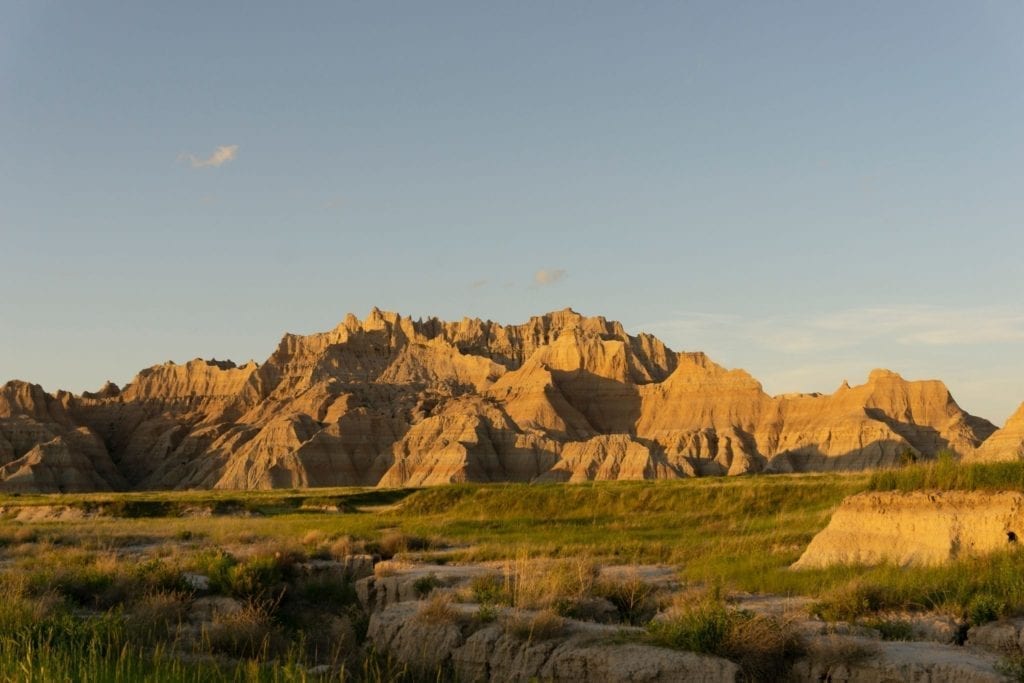
South Dakota National Parks
- Badlands: The arid, harsh environment of Badlands National Park wasn’t always this way. It used to be underwater! Today, Badlands looks like another planet and is a special place to explore fossils and history. It’s also an exceptional place for stargazing and astrophotography.
- Wind Cave: Able to be explored both above and below ground, here you’ll find famous, unique cave formations underneath the rolling prairies. Above ground, you’ll find one of only four herds of free-roaming bison. If adventurous, squeeze and scramble through Wild Cave on a guided tour to isolated parts of the cave network.
Tennessee National Parks
- Great Smoky Mountains: The Smokies is the most visited national park in America, spreading across parts of Eastern Tennessee and Western North Carolina. This park is a popular summer hiking destination and the premier place for national park fall colors. If you are in the park around mid-June, stay after dark to catch the rare synchronous fireflies that flash at night.
Texas National Parks
- Big Bend: Tucked away in the far corner of Texas, along the United States-Mexico border, you won’t reach this park by accident and will be rewarded with solitude when you do. The Rio Grande River runs through the park, with towering canyon walls on either side. Explore Big Bend by floating down the Rio Grande, hiking, or taking a scenic drive.
- Guadalupe Mountains: The dunes and mountains of Guadalupe Mountains National Park are incredibly dry and rugged. Less than 40 miles from Carlsbad Caverns National Park, both parks were part of an ancient underwater reef. The best way to explore the Guadalupe Mountains is on a hike around sunset.
Utah National Parks
If you’re looking for a complete overview of all the best parks, don’t miss this guide on Southern Utah’s 14 best national parks, including monuments, recreation areas, and more!
- Arches: Home to over 2,000 natural arches, most hundreds of millions of years in the making, the best way to see the park’s famous arches is on short hikes off the park’s main scenic drive. Don’t miss the sunset in Arches National Park to observe the magnificent orange, pinks, and reds of the sandstone reflect the last light of the day.
- Bryce Canyon: One of the more unique landscapes in the United States, Bryce Canyon is famous for its erosion-carved spires called hoodoos. It has the largest concentration of hoodoos in the world! The best way to explore Bryce Canyon is on a scenic drive to 14 viewpoints atop the canyon.
- Canyonlands: Only a short distance from Arches National Park, Canyonlands is much less crowded. The park is made up of deeply carved canyons and is reminiscent of the Grand Canyon. It is split into four sections, but most people only visit the most accessible district, Island in the Sky.
- Capitol Reef: The vast Waterpocket Fold formation made the region impassible to many early settlers. Much of the park is only accessible on rugged 4WD roads, so most visitors only visit the Fruita district. The Fruita District is home to an orchard, schoolhouse, and shops from the Morman settlement that occupied the area.
- Zion: The third most popular national park in the US, Zion differs from the other Utah national parks, trading the desert landscapes for sandstone and greenery! Zion is a haven for adventurous hikers, with some of the most popular hikes in the United States, like The Narrows and Angels Landing.
Read More: Ultimate 8-Day Utah National Parks Road Trip

Virgin Islands National Parks
- Virgin Islands: Virgin Islands National Park is the perfect tropical escape in the U.S. Virgin Islands. The ferry from St. Thomas will take you to the tiny US island of St. John. Virgin Islands National Park is famous for its underwater snorkeling trail along the reefs.
Virginia National Parks
- Shenandoah: Passing through the scenic Blue Ridge Mountains, Shenandoah is best seen on a long, scenic drive. Skyline Drive passes through the entirety of the park, running along the mountain top for 105 miles. Shenandoah National Park is one of the best places for catching glimpses of fall colors.
Washington National Parks
Before diving into the details, check out this post overviewing the best national parks in Washington State and what to do in each one.
- Mount Rainier: With more than 300 miles of hiking trails, Mount Rainier is one of the best national parks for hiking. Travelers can explore the park’s bucket list day hiking and backpacking trails. Some of the most scenic hikes in the park take you far above the clouds to picturesque fire lookout stations, like Mount Fremont Lookout.
- North Cascades: One of the least visited national parks in the country, North Cascades’ mountains, forests, alpine lakes, and glaciers should be on your radar. North Cascades has more glaciers than Glacier National Park! The best way to explore North Cascades is on a scenic drive on the North Cascades Scenic Highway and hiking some of the park’s trails.
- Olympic: Olympic National Park gets its name from its highest peak, Mount Olympus, after Greek mythology. The diverse landscape takes you through mountains, rainforests, and beaches. Explore the unique coastal national park by hiking and camping in the park’s various regions.
Read More: 3 Best Washington National Parks
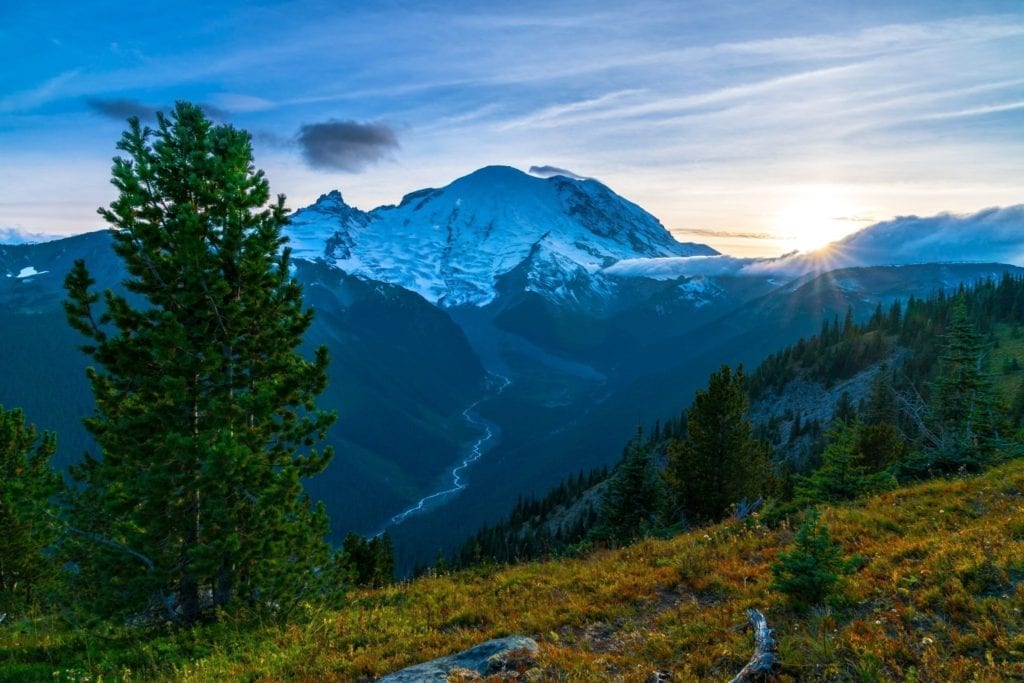
West Virginia National Parks
- New River Gorge: Only established in 2020, New River Gorge is America’s newest national park. It protects the rugged New River, one of the oldest rivers in North America. The most popular activity in the park is whitewater rafting, with plenty of Class IV and V rapids.
Wyoming National Parks
- Grand Teton: Often overshadowed by its neighbor, Yellowstone National Park, Grand Teton is one of the most stunning national parks in the United States. From stunning views of the Rocky Mountains to some of the best backpacking treks, this national park has something for everyone. The best way to explore Grand Teton National Park is on a hike or even a multi-day backpacking trip!
- Yellowstone: The fourth most visited national park in the United States, Yellowstone was America’s first national park. It straddles three states: Wyoming, Montana, and Idaho, although most of the park is in Wyoming. You’ve probably heard of Yellowstone’s most well-known landmark, the Old Faithful geyser. The best way to explore the park’s famous geysers is on a scenic drive, stopping at the viewpoints along the way.

US National Park Checklist Interactive Map
This interactive map is the perfect map of America for getting your bearings and starting your national park trip planning process!
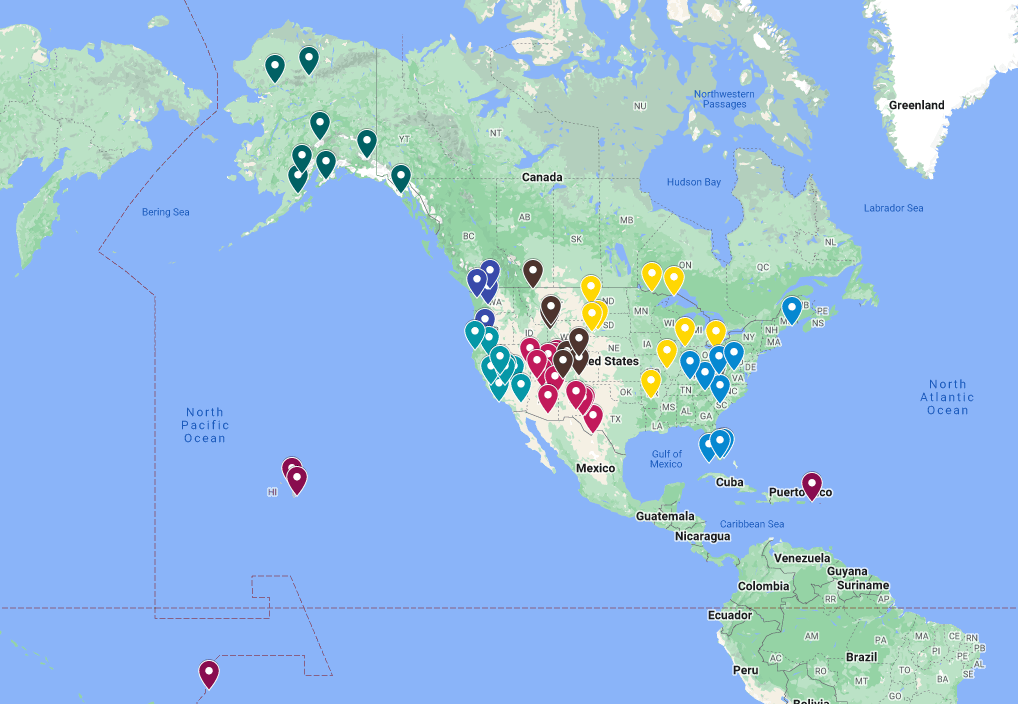
Free Printable List of National Parks in the US
Are you trying to check every national park off your bucket list? Don’t miss this free, printable national park checklist! It covers all 63 US national parks, including the latest addition, New River Gorge! Plus, you’ll get a free national park map to help you plan your next trip.
Download your free national park checklist here.
US National Parks Checklist Frequently Asked Questions
Which state has the most national parks?
California has the most national parks of any state, with nine national parks. These parks range from mountainous to desert landscapes. After California, the states with the most national parks are Alaska with eight, Utah with five, and Colorado with four.
Do all states have national parks?
While all states have a national park site, not all states have an official national park. The states without national parks are Alabama, Connecticut, Delaware, Georgia, Illinois, Iowa, Kansas, Louisiana, Maryland, Massachusetts, Mississippi, Nebraska, New Hampshire, New Jersey, New York, Oklahoma, Pennsylvania, Rhode Island, Vermont, and Wisconsin.
How many states have national parks?
Thirty states in the United States have national parks. In addition, two United States territories, the US Virgin Islands and American Samoa, also have national parks. In total, these states and territories protect 63 national parks.
What is the only state without a national park?
Delaware is the only state in the United States without a national park site. The state does not have a national park, national monument, national historic site, or any other national park unit protected by the National Park Service as of 2024.
What is the smallest national park in the US?
The smallest national park in the United States is Gateway Arch National Park. This park was established in 2018 and only covers 91 acres in the heart of downtown St. Louis, Missouri. This unique historic park is smaller than all the other national parks by thousands of acres. That’s 0.0007% of the size of the largest national park!
What is the biggest national park in the US?
The biggest national park in the US is Wrangell-St. Elias National Park in Alaska. This massive park covers 13 million acres across the national park and preserve. That’s about 4% of the land in Alaska. The second, third, and fourth biggest national parks are also in Alaska!
Are there 62 or 63 national parks?
As of 2024, there are 63 national parks. The latest addition was added in 2020 in West Virginia: New River Gorge National Park. These parks are protected by the National Park Service and are located across 30 states and two US territories.
What national park is in 3 states?
Yellowstone National Park is the only US national park located in 3 states. While most of the park is located in the northwest corner of Wyoming, parts of the park also cross into Idaho to the west and Montana to the north.
Final Thoughts on the Best List of National Parks by State
There are 423 national park units in the United States, including 63 national parks. I hope this guide has inspired you to check the national parks off your bucket list and get out on a wild parks adventure!
Looking for ways to document your national park bucket list? Check out these posts!
- 7 Best National Park Scratch-Off Maps
- Best National Parks Passport Options
- 25 Best National Park Book Recommendations
- 45 Best Gifts for National Park Lovers in 2024
Are you trying to check every national park off your bucket list? Don’t miss this free, printable national park checklist! It covers all 63 US national parks, including the latest addition, New River Gorge! Plus, you’ll get a free national park map to help you plan your next trip.
Download your free national park checklist here.
Don’t Forget to Save This Post on Pinterest
